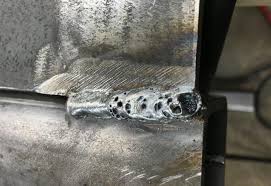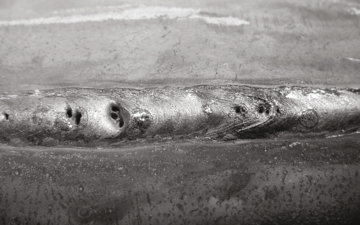Understanding Porosity in Welding: Checking Out Reasons, Impacts, and Prevention Techniques
As specialists in the welding industry are well conscious, recognizing the reasons, results, and avoidance techniques associated to porosity is vital for accomplishing robust and reputable welds. By diving right into the origin creates of porosity, examining its detrimental effects on weld high quality, and checking out reliable avoidance methods, welders can enhance their expertise and skills to produce top quality welds consistently.
Common Causes of Porosity
Contamination, in the form of dust, oil, or rust on the welding surface area, creates gas pockets when heated up, leading to porosity in the weld. Inappropriate shielding happens when the shielding gas, frequently made use of in processes like MIG and TIG welding, is not able to fully safeguard the liquified weld pool from reacting with the bordering air, resulting in gas entrapment and succeeding porosity. Additionally, poor gas insurance coverage, frequently due to wrong circulation prices or nozzle positioning, can leave components of the weld unprotected, allowing porosity to develop.
Results on Weld Quality
The visibility of porosity in a weld can dramatically endanger the total quality and stability of the welded joint. Porosity within a weld creates voids or cavities that damage the framework, making it a lot more at risk to fracturing, deterioration, and mechanical failing.
Additionally, porosity can impede the performance of non-destructive testing (NDT) techniques, making it testing to identify various other defects or stoppages within the weld. This can cause considerable safety concerns, specifically in critical applications where the structural honesty of the welded components is extremely important.

Avoidance Techniques Introduction
Offered the harmful effect of porosity on weld high quality, efficient prevention methods are vital to keeping the architectural honesty of bonded joints. In addition, picking the ideal welding specifications, such as voltage, existing, and take a trip rate, can aid decrease the threat of porosity development. By incorporating these prevention techniques right into welding techniques, the incident of porosity can be substantially lowered, leading to stronger and more trustworthy welded joints.
Value of Proper Protecting
Correct protecting in welding plays an important function in avoiding climatic contamination and making sure the stability of welded joints. Securing gases, such as argon, helium, or a mixture of both, are frequently utilized to protect the weld swimming pool from responding with elements airborne like oxygen and nitrogen. When these reactive aspects enter call with the hot weld swimming pool, they can trigger porosity, resulting in weak welds with minimized mechanical homes.

Poor protecting can result in numerous problems like porosity, spatter, and oxidation, endangering the structural honesty of the bonded joint. Therefore, sticking to correct protecting techniques is necessary to produce high-grade welds with marginal problems and ensure the durability and integrity of the welded elements (What is Porosity).
Surveillance and Control Methods
Exactly how can welders successfully check and control the welding process to make certain optimum outcomes and stop flaws find more information like porosity? By constantly keeping an eye on these variables, welders can determine inconsistencies from article source the ideal problems and make prompt changes to prevent porosity development.

In addition, carrying out appropriate training programs for welders is important for monitoring and managing the welding process effectively. What is Porosity. Enlightening welders on the value of preserving consistent criteria, such as correct gas securing and take a trip rate, can assist protect against porosity issues. Routine analyses and qualifications can additionally ensure that welders are proficient in monitoring and regulating welding processes
Moreover, using automated welding systems can enhance monitoring and control abilities. These systems can specifically manage welding specifications, reducing the chance of human error and making certain regular weld top quality. By combining innovative monitoring modern technologies, training programs, and automated systems, welders can efficiently check and manage the welding process to lessen porosity defects and accomplish top notch welds.
Conclusion
